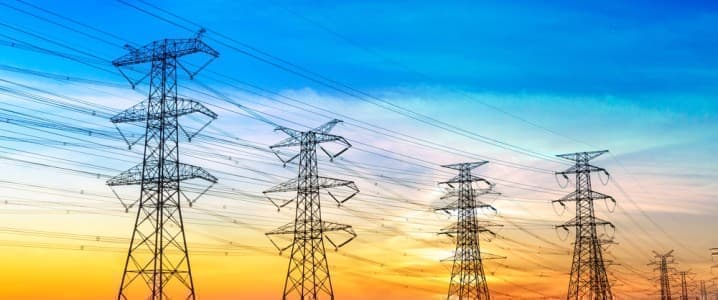- Kenya boasts nearly 90% renewable energy in its power mix, making it a leader in Africa.
- The country seeks to leverage its clean energy expertise and become a green technology supplier through partnerships with major economies.
- Despite vast resources, Africa faces funding challenges when it comes to executing its energy transition aims.

For years, Kenya has been a leader in Africa in renewable energy’s share of its power mix. It now looks to capitalize on the booming clean technology industry and become a supply-chain partner of major economies, including the United States.
Africa has abundant key energy transition minerals. It also has a huge young generation and developing economies, all of which will need increasing demand for energy in the coming years and decades.
But debt-ridden African countries do not have the financial means to become clean technology powerhouses such as China or the U.S., because they cannot afford to shell out lavish incentives and subsidies to spur green tech manufacturing.
The problem in the energy transition has always been emerging markets, especially in Africa, not catching up with the rest of the world in terms of clean energy deployment.
Kenya in East Africa has been a standout in the renewable energy sector and now looks to boost green industrialization and clean energy manufacturing. Yet, its funding issues are similar to those hampering Africa’s energy transition.
While developed economies are subsidizing the energy transition, developing nations in Africa lack the resources to be clean technology leaders.
Renewables Account for 90% of Kenya’s Energy Supply
“Kenya is an emerging leader in the global clean energy landscape, with renewables accounting for nearly 90% of energy generated and consumed in 2021,” the International Energy Agency (IEA) says.
The largest clean energy source in Kenya is geothermal: of the 90% renewable energy, about 47% comes from geothermal energy, 30% from hydropower, 12% from wind, and 2% from solar.
Kenya has also made strong progress towards achieving universal access to electricity, doubling electricity access from 32% in 2013 to 75% in 2022. The country is on track to provide electricity to its entire population by 2030, in line with national plans to achieve universal access, according to the IEA.
Under the government’s Kenya Vision 2030, the development of new and renewable energy sources, energy efficiency, and increasing electricity access are focus areas as the country aims to provide greater support for addressing energy demand and greater integration of renewable energy.
Kenya is the world’s seventh top producer of geothermal energy, thanks to its geography. The country of about 54 million people lies in the Great Rift Valley, a series of geographic trenches and lowland areas, the International Monetary Fund (IMF) says.
“A developing country having close to 90 percent of renewable energy power generation is quite unique,” Tobias Rasmussen, IMF resident representative in Kenya, said in 2022.
“Renewable energy has the potential to be a major growth driver for Kenya going forward,” Rasmussen added.
Kenya-US Climate Partnership
Kenya is eager to tap its clean energy industrial potential and signed last week a Climate and Clean Energy Industrial Partnership with the United States during the state visit of President William Ruto to the U.S.—the first state visit of an African leader to the White House in more than 15 years.
“Through this partnership, the United States and Kenya plan to prioritize cooperation across the three mutually supportive areas of clean energy deployment, clean energy supply chains, and green industrialization,” U.S. President Joe Biden and Kenya’s President Ruto said in a joint statement.
The United States and Kenya pledged to use their respective advantages in the clean energy sector and to develop resilient value chains for low-emission goods, including electric vehicle supply chains and e-mobility, carbon capture and storage technologies, green agricultural processing, clean cooking technologies, and green data centers.
“In our bilateral engagement, the United States and Kenya commit to consult on key policy, trade, and regulatory reforms to support the development of and investment in green industrial opportunities,” the leaders said.
The U.S. has launched clean technology and investment engagements with Kenya, collaborating with companies that invest in clean energy development and energy-intensive industries.
Just last week, Microsoft and UAE’s G42, in collaboration with local partners, agreed to design and build a data center campus in Kenya that will run entirely on renewable geothermal energy.
“Africa’s resource potential is a huge opportunity to deploy US technology and investment to catalyze unprecedented growth through green industrialization,” Kenyan President Ruto said, commenting on the U.S.-Kenya climate partnership.
ADVERTISEMENT
Challenges to Africa’s Energy Transition
But Africa faces an uphill battle to accelerate the energy transition despite its huge needs and rich mineral resources. Africa accounts for around 20% of the world’s population but attracts less than 2% of its spending on clean energy, the IEA said in a report last September.
“As things stand, there is a mismatch between the type of capital available and the needs of Africa’s emerging clean energy sector, with a particular lack of early-stage and equity financing,” the IEA said.
Around the same time in September 2023, the African heads of state and government met for the inaugural Africa Climate Summit (ACS) in Nairobi, Kenya, and expressed concern that “despite Africa having an estimated 40 percent of the world’s renewable energy resources, only $60 billion or two percent of US$3 trillion renewable energy investments in the last decade have come to Africa.”
Commenting on the IEA’s report last year, the agency’s Executive Director Fatih Birol said “The African continent has huge clean energy potential, including a massive amount of high-quality renewable resources.”
“But the difficult backdrop for financing means many transformative projects can’t get off the ground.”
By Tsvetana Paraskova for Oilprice.com
More Top Reads From Oilprice.com:
Tsvetana Paraskova
Tsvetana is a writer for Oilprice.com with over a decade of experience writing for news outlets such as iNVEZZ and SeeNews.





































